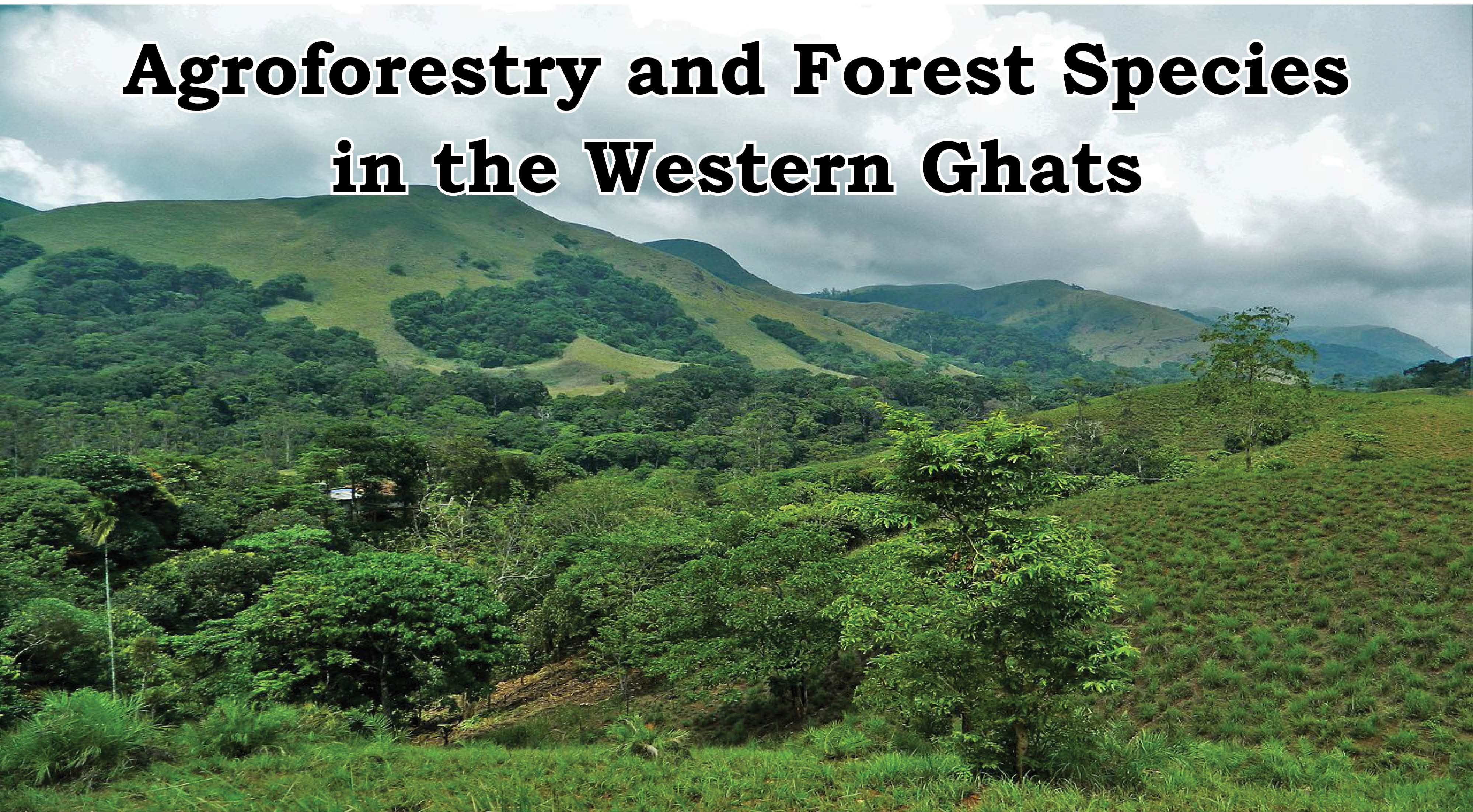Introduction
The Western Ghats, a UNESCO World Heritage site and a biodiversity hotspot, is increasingly facing the adverse impacts of global warming. A recent empirical study has brought to light the growing vulnerability of tropical agroforestry and native forest species in this region to rising temperatures. Conducted over a 4.5-month period in 2023 in Hosagadde village near Sirsi, Karnataka, the study assesses the physiological responses of plants to heat stress and evaluates their thermal safety margins, especially in light of predicted climatic changes.
Research Methodology and Focus
The study used a parameter known as T₅₀—the temperature at which photosynthetic efficiency of a leaf declines by half. This threshold is widely used in plant studies to identify the point beyond which cellular damage becomes irreversible, potentially leading to the death of the plant. Scientists found that many species experienced leaf temperatures surpassing these critical thresholds, raising alarms about their ability to cope with increasingly extreme climatic conditions.
Among the agroforestry species studied were commercially significant plants such as cardamom, cashew, sapota (chikoo), cinnamon, citrus, clove, cocoa, coffee, lemon, pepper, rambutan, syzygium, and vanilla. Several of these species were found to experience brief periods of extreme heat that could cause long-term damage, although the exposure time was generally less than 10 minutes.
Key Findings
Heat Stress and Leaf Temperature Response
- Leaf temperatures during peak sunlight often exceeded air temperatures by 10–12°C, with ambient air occasionally surpassing 40°C.
- Several species recorded leaf temperatures exceeding their T₅₀ thresholds, albeit for short durations (generally less than 10 minutes).
- Short-term exposures may not always cause irreversible damage, but repeated heat events combined with other stressors—such as water scarcity and pathogen attacks—can intensify the risk.
Species Vulnerability
- Cocoa, cinnamon, coffee, lemon, and rambutan emerged as particularly vulnerable to thermal stress.
- Visible leaf injuries, such as blackened areas, were observed in many species, indicating potential long-term impacts of heat spikes.
Native Species Observations
- Among the native species, Kindal (a deciduous tree) experienced extreme but inconsistent heat episodes.
- Ironwood showed minor signs of stress, suggesting greater tolerance compared to most agroforestry species.
Thermal Safety Margin
The thermal safety margin—the buffer between a plant’s leaf temperature and its T₅₀ threshold—is shrinking. A smaller margin indicates higher vulnerability, particularly for agroforestry species already operating near their thermal limits.
Agroforestry and Carbon Sequestration in India
Agroforestry, a sustainable land-use system that integrates trees with crops, offers a range of economic, ecological, and social benefits. In India, this practice spans approximately 28.4 million hectares, accounting for about 8.65% of the country’s total land area. Importantly, agroforestry contributes around 19.3% to India's overall carbon stock. With appropriate policy and financial support, experts estimate that agroforestry could sequester over 2.5 billion tonnes of CO₂-equivalent by the year 2030.
ARR and Carbon Finance
Agroforestry is closely aligned with Afforestation, Reforestation, and Revegetation (ARR) initiatives, which are vital for land restoration, biodiversity conservation, and enhancing climate resilience.
- However, India's highly fragmented landholding patterns present a significant barrier to accessing global carbon finance.
- With nearly 86.1% of farmers being small or marginal and operating on less than two hectares, their dispersed practices are often deemed “common” under global standards such as Verra’s Verified Carbon Standard (VCS) and the Gold Standard.
- This classification disqualifies many Indian farmers from participating in carbon credit schemes, despite the clear environmental value of their efforts.
The Need for Reform in Carbon Finance Mechanisms
- A major challenge is the application of the “common practice” criterion, which Indian agroforestry frequently fails, not due to a lack of effectiveness but because of its widespread, traditional presence. Additionally, existing carbon finance models are largely based on large-scale, contiguous farming landscapes typical of countries like the United States or Brazil, making them incompatible with India's smallholder-driven agricultural system.
- This structural mismatch is compounded by low awareness among farmers about the benefits of agroforestry, as well as the high upfront costs of saplings, fencing, and maintenance. These factors deter broader adoption, particularly among economically vulnerable rural communities.
- To address these challenges, carbon finance mechanisms must be reformed. India-specific definitions of “additionality” need to be developed to account for the unique characteristics of the country’s agricultural landscape. Innovative policy approaches should aim to create inclusive standards that make carbon markets accessible to small and marginal farmers.
- Financial support in the form of subsidies or low-interest loans could ease the burden of initial investments, while training programs would help farmers understand critical aspects such as tree-crop compatibility, sustainable water use, and long-term land management.
Benefits of Agroforestry Integration
- The integration of agroforestry with carbon finance holds immense promise. Economically, it can diversify income sources for farmers by providing both carbon credits and tree-based products.
- Environmentally, agroforestry improves soil fertility, enhances water retention, and contributes to the restoration of degraded lands.
- At the social level, the additional income generated through such systems can strengthen rural livelihoods, reduce dependency on unpredictable monsoons, and ultimately promote greater resilience within agricultural communities.
Conclusion and Way Forward
The Western Ghats study signals an urgent need to assess and mitigate heat stress risks for both economically significant agroforestry crops and ecologically vital native forest species. Simultaneously, India must redefine its carbon finance architecture to accommodate its unique farming landscape.
To ensure resilience against future climate scenarios:
- Heat-tolerant species and varieties should be identified and promoted.
- Planting schedules and canopy management techniques may help mitigate heat exposure.
- Institutional support, innovative policy frameworks, and inclusive carbon finance mechanisms are key to realizing agroforestry’s full potential.
India stands at a critical juncture where it can lead global efforts in sustainable agroforestry by integrating climate science, policy reforms, and rural empowerment.
| Main question: Agroforestry has emerged as a climate-resilient strategy, especially for small and marginal farmers. In light of recent studies from the Western Ghats, examine the role of agroforestry in carbon sequestration and climate adaptation. What reforms are needed to ensure equitable access to carbon finance? |







